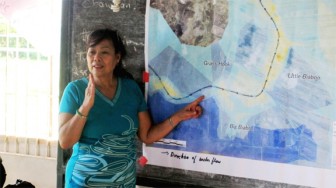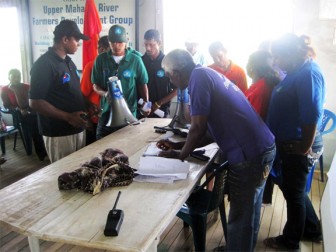Officials and volunteers from the Civil Defence Commis-sion (CDC) in collaboration with members of the Japan International Co-operation Agency (JICA) on May 12 engaged residents of the Upper Mahaica River communities of Little and Big Baiboo in testing their readiness for emergency flood operations, the CDC said in a press release.
During the largely simulated exercise, the residents along with CDC personnel were required to demonstrate the requisite systematic actions to be taken in the event of a real time flood hazard which had the potential to wreak physical, material and economic havoc on the community.
The release stated that the community was issued with handheld VHF radios to enable communications and members of the Upper Mahaica Preparedness and Response Committee were issued with kits, including long boots, raincoats, hats and T-shirts.

Operating in various teams designed to activate health, shelter, medical, transportation, warning and relief, the residents successfully simulated all aspects of the Community Flood Prepared-ness and Response Plan.
This included the activation of the Early Warning System for the communities by way of providing warning announcements, disseminating of necessary information to the citizenry, testing of evacuation routes utilizing signage and hazard maps erected in the community and the evacuation of cattle and residents from the “affected” areas to safe places where they would be out of danger.

Additionally, the exercise allowed for the simulation of the provision of medical and relief assistance, the release added.
The exercise is part of a project which has been undertaken by the CDC with the assistance of the JICA which has provided experts in mapping and other aspects of flood disaster preparedness and response.
The exercise has built from the work already completed by the JICA team with regard to mapping the community and the establishment of the Early Warning System.
The National Drainage and Irrigation Authority, the University of Guyana, Lands and Surveys Commission, Hydromet Department, Ministry of public Works and Communication, Guyana Forestry Commission, Guyana Red Cross Society, and the CDC volunteers are involved in the project which is scheduled to conclude next month.




